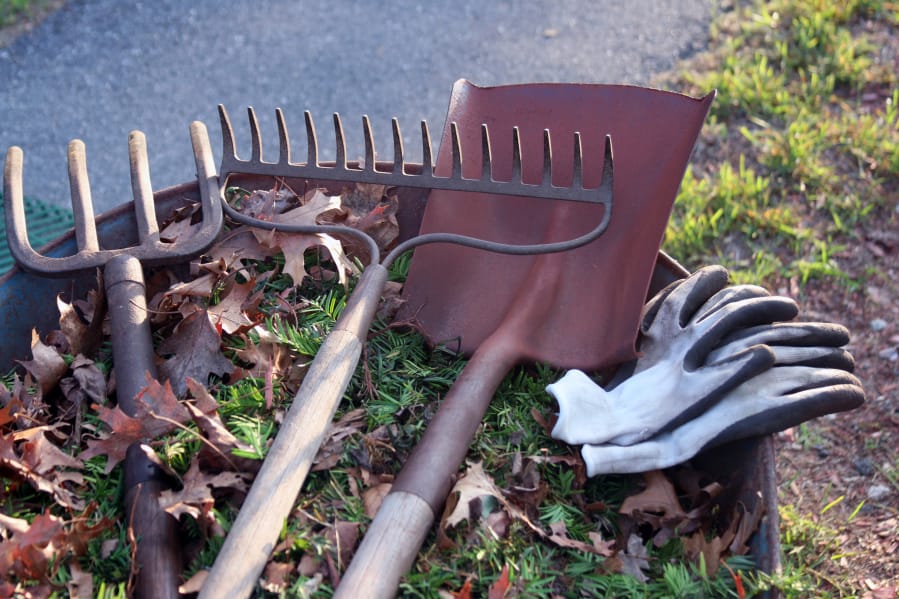CORVALLIS, Ore. — We’re running right into the holidays, daylight is in short supply and rain comes down days at a time, but if you can get out in the garden or at least the garage, you’ll be happier come spring.
A perennial question is whether to cut down plants now or in spring. The answer is not clear cut, said Jeff Choate, a former horticulturist with Oregon State University Extension Service. When it comes to vegetable gardens, everything should come out. Annuals, too, can be uprooted. With perennials, it depends.
“With vegetable gardens, removing spent plants is essential because of the risk of disease; soilborne diseases can remain viable for years,” he said. “For herbaceous perennials, it’s more of a choice. Some people like to tidy up the garden; others leave it until spring.”
You’ll recognize some perennials that are good choices to clean up now because they die to the ground anyway. Clear up the debris and throw it into the compost pile or yard debris bin. Avoid the compost pile for plants plagued by disease.
There are perennials – like ornamental grasses, coneflower, Joe-Pye weed, sedum and black-eyed Susan – that provide birds with much-need seeds and insects with places to spend the winter. These are good candidates to leave standing. Choate noted that it’s also a good idea to design your garden with shrubs and trees that produce berries, which will help out the birds, as well.
To spread leaves around the garden or rake them up is another oft-asked question. Yes, place them on vegetable beds, where they’ll protect the soil from compaction from the rain, suppress weeds, increase soil fertility and help open up soil structure to keep it draining well. Spreading leaves around shrubs is also a good idea. But once again, perennials beg the question. Those rascally slugs love to lay their eggs under garden debris, but that can be mitigated with a low-toxicity slug bait.
“It’s a tough one, I admit,” Choate said. “There’s a good side and a bad side. The good side is that the leaves break down and feed the worms and other beneficial organisms. The bad side is slugs. But the benefits of leaving leaves down around ornamentals outweigh the disadvantages.”
It is a good idea, though, to keep leaves – and bark dust, for that matter – away from slug favorites like hostas.
If you act quickly, it’s still an OK time to add lime to vegetable beds and lawns. Choate recommends buying a simple pH test kit at the garden center or home improvement store. For the vegetable garden, if it reads below 6, apply lime at a rate of 5 pounds of lime per 100 square feet.
One chore you can take off your plate is pruning. Choate recommends waiting until the latter part of February to prune shrubs and trees.
Be sure to know what your plants’ needs are, he noted. Spring-blooming plants like rhododendrons, azaleas, lilacs, and forsythia shouldn’t be trimmed until after they bloom.
One more thing before moving into the relative warmth of the garage: Gather fruit hanging in trees or rotting on the ground and get it out of there to minimize diseases and pests such as apple scab and coddling moth next year.
In the garage
Onward to the garage where tools and lawn mowers await your attention. Choate advises cleaning your tools as you go. He keeps WD-40 and a rag in his garden bucket to use as needed. But if you don’t get to it every time, be sure to clean them now so they don’t sit dirty and rusting during winter. Wash and dry them, sharpen, oil any moving parts and rub linseed oil on wooden handles to keep them from drying out and cracking.
Smooth-edged tools can be sharpened at home, but other types – think pruning saws, chainsaws and the like – should be taken to a professional to avoid damage to the tool or injury to yourself.
Lawn mowers need attention now, too. The single most important task is to empty them of gas. Turn on the motor and let it warm up for 30 seconds, then shut it off and siphon the gas. Restart the engine and run until it quits.
“The number one issue for small gas engines is bad gas,” Choate said. “That stems from the fact that gas has 10 percent ethanol, which will absorb water from the atmosphere. Having water in your lawn mower is not a good thing.”
Also, take the time to change the oil, spark plugs and air filter. When replacing the spark plugs, make sure you’re using the right one. Your owner’s manual (sometimes you can find it online if you don’t have the paper version) should indicate the correct one. Make sure the gaps are correct by using an inexpensive gap tool.
Now all you have to do is wait for spring.



